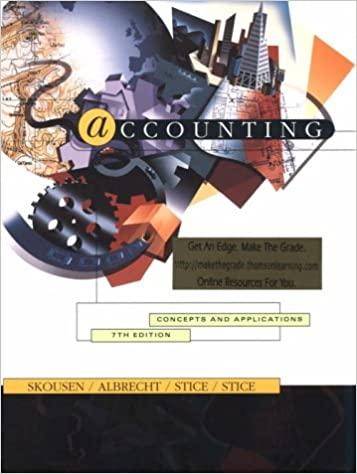FINANCIAL REPORTING INDIVIDUAL ASSIGNMENT (22 MARCH 2020) Marks: [35] NB: Please use the answer sheet provided. You may use non-programmable calculators. QUESTION 1: (15 MARKS)
FINANCIAL REPORTING
INDIVIDUAL ASSIGNMENT (22 MARCH 2020) Marks: [35]
NB: Please use the answer sheet provided.
You may use non-programmable calculators.
QUESTION 1: (15 MARKS)
Answer each of the following questions by selecting the correct letter (A E) next to the relevant the number on the answer sheet. Unless otherwise indicated, questions are not related. Only one answer per question will be allowed.
-
- XYZ traders had equipment (cost price) on 1 January 2016 of R 80 000. A residual value of R5 000 is placed on equipment, and depreciated over useful life of 5 years on the straight-line method. At the beginning of the current year (1 January 2018) the equipment had accumulated depreciation of R 30 000. The carrying amount of the equipment at the end of the financial year (31 December 2018) will be?
- R32 000
- R35 000
- R33 333
- R30 000
- None of the above. (2)
-
- A vehicle was purchased for R 50 000 at the beginning of the financial year, and is depreciated at 10% per annum on the reducing balance method. Accumulated depreciation on the vehicle at the beginning of the year was R13 550. Depreciation on the vehicle for the year will be?
- R5 000
- R3 465
- R3 645
- R 4 050
- None of the above. (2)
-
- Which of the following assets are not depreciated?
- Vehicle
- Fixed deposit
- Equipment
- Machinery
- None of the above . (1)
- Which of the following examples are current assets?
- Buildings, bank, trade and other receivables
- Vehicles, inventory, petty cash
- Inventory, bank, trade and other payables
- Inventory, bank (ct), trade and other receivables
- None of the above. (2)
-
- The following are examples of owners equity accounts?
- Capital, fixed deposit
- Capital, drawings
- Income, drawings
- Long-term loan, expense
- None of the above. (2)
-
- Which of the following assets are not classified as a non-current asset?
- 48 months fixed deposits
- Debtors control
- Vehicles
- Furniture
- None of the above. (2)
-
- Which of the following sequences of steps best describes the correct sequence in the accounting cycle?
- Source document, journal, ledger, trial balance, financial statements
- Source document, trial balance, journal, ledger, financial statements
- Source documents, ledger, journal, trial balance, financial statements
- Trial balance, source documents, financial statements, ledger, journal
- None of the above. (2)
- A cheque has been received from X, a trade debtor. How is the transaction recorded in the books?
| Letter | Account debited | Account credited |
| A. | Bank | X |
| B. | X | Bank |
| C. | Sales | X |
| D. | X | Sales |
| E. | None of the above. | |
(2)
QUESTION 2: (20 MARKS)
On 1 March 2010, the beginning of the financial year, RELY DELIVERY SERVICES opened its business, and the owner, Ms R. Ely purchased two Ford bakkies (vehicles) with a total cost of R480 000.
The accumulated depreciation on the two vehicles amounted to R192 000 on 1 March 2012.
Depreciation on all vehicles is calculated at 20% per annum on the straight-line method.
On 1 September 2012, one of the Ford bakkies, with a cost price of R260 000 on 1 March 2010, was sold for R140 000 cash. On the same day, a new Toyota bakkie was purchased cash, with a cost price of R250 000. A residual value of R30 000 is placed on the Toyota bakkie.
You are required to:
-
- Journalise the entries in the general journal of RELY DELIVERY SERVICES with regards to the new Toyota bakkie for the year ended 28 February 2013. (The purchase and the depreciation). (4)
- Disclose the following accounts in the general ledger of RELY DELIVERY SERVICES for the financial period ending 28 February 2013. (16)
- Vehicles
- Accumulated depreciation: Vehicles
- Depreciation
- Realisation account
- Profit or loss on sale of asset account
- Bank
NOTE:
- Balance the bank account only!
- Journal narrations (descriptions) are not required.
- Round off to the nearest Rand (R).
Step by Step Solution
There are 3 Steps involved in it
Step: 1

See step-by-step solutions with expert insights and AI powered tools for academic success
Step: 2

Step: 3

Ace Your Homework with AI
Get the answers you need in no time with our AI-driven, step-by-step assistance
Get Started


